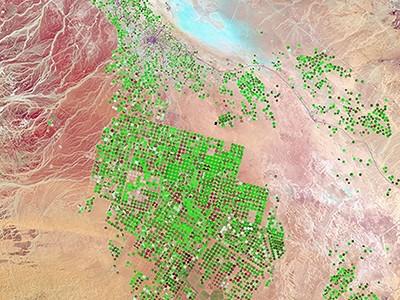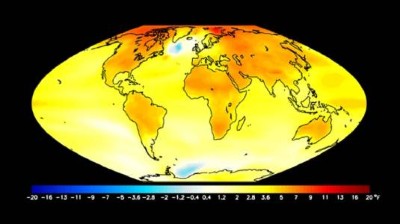Global warming has accelerated in the past decade, with the world’s average surface temperature in 2024 surpassing pre-industrial levels by 1.5 °C1. Although, so far, human activities have been largely responsible2, the factors behind recent record-breaking temperatures remain to be understood. Are human activities amplifying warming faster than scientists expected, or might natural changes in the Earth system have a stronger role than presumed? Researchers and policymakers need answers fast.
To quantify the causes and effects of climate change, the climate-research community relies mainly on three types of information sources. First, model simulations provide insights and predictions on timescales from one year to decades, through initiatives such as the World Climate Research Programme’s Coupled Model Intercomparison Project (CMIP)3 and Explaining and Predicting Earth System Change activities4. Second, snapshots of global climate are tracked through various observed and model-based indicators5. Third, climate reanalyses such as ERA5 (see go.nature.com/3hxepxf) and MERRA-2 (see go.nature.com/41x7k24), which assimilate historical observations into models, are widely used for monitoring and research to understand how the Earth system has evolved.
Google AI model mines trillions of images to create maps of Earth ‘at any place and time’
Although these and other analyses by climate researchers use the most up-to-date observations, model simulations tend to lag. Models are driven by estimates of natural and human influences on Earth’s climate system — known as forcings data — that are based on analyses of a wide range of observations, covering temperatures, greenhouse gases and more. Almost all Earth system models use the same forcing data sets, which are formally updated every five to seven years to support successive phases of the CMIP6. Thus, the inputs to drive the models are based on older or approximate data that might not reflect conditions today.
Annual updates to the forcing data sets are urgently needed to enable researchers to understand and explain unfolding changes in the world’s climate in near-real time7. Here, we and our co-signatories (see Supplementary information) set out how that can be done.
Recognize the need for speed
Forcing data sets are built using a variety of climate observations and products derived from them (see Supplementary information). The data sets include: emissions of greenhouse gases and aerosols; concentrations of greenhouse gases and substances that deplete ozone; aerosols ejected by volcanoes; as well as measures of incoming solar radiation, land-use changes, sea surface temperatures and sea ice. The resulting files must be prepared in standard data formats and disseminated on a stable, accessible and robust platform. All of this takes time.
Climate scientists push for access to world’s biggest supercomputers to build better Earth models
Over the past decade, the production of forcing data sets has become more coordinated. Before the CMIP’s fifth phase (CMIP5; 2008–13), they were developed in an ad hoc way, mostly in-house at modelling centres. CMIP6 (2014–21) spawned a system under which the data sets were developed by specialists based elsewhere8. This work was brought together in 2022 under the CMIP Forcings Task Team (see go.nature.com/3jxaqgf) to support the ongoing CMIP79. Earlier this year, the latest forcings data sets were delivered10, most of which span from 1850 to the early 2020s.
But climate conditions can vary a lot over five to seven years, influenced by volcanic eruptions, large wildfires, or even pandemics or policy interventions. Annual updates to forcings data sets would better align model simulations and observations. Progress in four areas is needed for this to happen.
Secure, reliable observations
A sustained and robust stream of observations is essential for accurate and timely updates. Three actions are needed. First, researchers and governments must enhance and maintain comprehensive long-term global observational networks to ensure consistent coverage of climate-relevant variables. Second, institutions around the world should align observational efforts, share data, enhance data availability and quality, and coordinate funding. Third, a sustainable source of funding is needed for the long-term production of forcings data sets, including the augmenting of existing work on data-format and quality standards, and documentation that enhances downstream use.
Balance research and applications
The generation of forcings data sets is a continuous process, involving research and refinement before the final products are compiled and disseminated. The data sets have a range of uses, from real-time applications such as air-quality forecasting and the detection and tracking of emission events, including those from volcanic eruptions and wildfires, to comprehensive historical analyses. Each use has different requirements.
Governments must stop hoarding climate data





